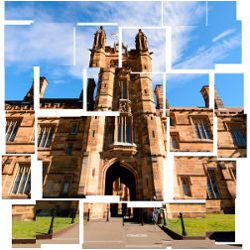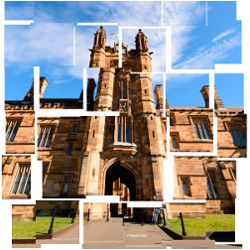
Are universities about to be disrupted the way Kodak, Borders, and Blockbuster, all recently in bankruptcy, were disrupted? Blended courses, online learning, and MOOCs are moving at light speed compared to the typical university. This Viewpoint will highlight the opportunities and threats from technology and recommend that higher education institutions morph their business models in response to these challenges. Examples of the transformation in higher education include:
- The Minerva Project proposes to create a top-tier for-profit research university. Students live together on different campuses around the world and top professors stream online classes to student seminars (New York Times, 4/21/2013).
- Generation Rwanda is starting an entirely massive open online course (MOOC) university with tuition under $1,500 a year. It plans a 400-person university in Rwanda with MOOCs providing the content and teaching fellows handling discussions. Southern New Hampshire University will test and certify associates degrees. Currently 1% of Rwanda’s population has a college degree (Technology Review, 3/15/2013).
- Georgia Tech announced a professional online Master of Science degree in computer science earned through MOOCs in conjunction with Udacity and AT&T. The program estimates tuition at $6,600 for the three years of course work with 4,500 centers for proctoring examinations. There are recent reports that the school has received twice the expected number of applications for the program (Wall Street Journal, 10/29/2013).
While these proposals may or may not be successful, technology is enabling many new ideas for higher education. This Viewpoint describes the promises (and threats) of innovations like these based on my experience teaching along with my research on disruptive technologies.2,5
A Typology
Table 1 summarizes a wide variety of new instructional practices enabled by technology. Online education includes fully online classes, blended learning and MOOCs, and these can be mixed and matched to create a huge variety of student experiences.a
Opportunities and Threats
Table 2 describes opportunities and threats from disruptive technologies applied to learning. The table distinguishes among content producers/consumers who create and use MOOCs and other online materials, and content consumers who use content created by others.
The development of MOOCs and other kinds of online education expands the scope of the university far beyond students on campus and its alumni; schools can have a global reach. My first MOOC had students from nearly 100 countries. Along with this expansion of scope will come increased competition; MOOCs and online courses spread a school’s brand around the world. But that means universities will compete with each other to attract students for a variety of programs and courses, and we will see competition at the level of the individual course and individual course module.
Technology-enhanced instruction places more responsibility on the student for learning and less on the faculty member.
Generation Rwanda and the Minerva Project preview what could become the greatest threat to universities: new ventures consuming content with cost structures that are a fraction of the costs of existing universities. The content producer develops and distributes content; it has to worry about the high investments needed to develop courses. The university that primarily acquires content benefits from these efforts. However, there must be a balance so that the content producers and consumers remain viable financially. There will be a new funding model as organizations like Coursera license MOOCs to a school and collect a royalty shared with the school that created the MOOC.4 San Jose State University is using MOOCs for remedial work (New York Times, 4/29/2013). A group of universities is offering MOOCs as a free, for-credit first course toward a university degree to encourage students to start college (see http://mooc2degree.com).
The physical campus will see changes. Some students will elect to be on campus for less than an academic year, taking online classes from home and working part-time for part of the semester. Colleges will need dormitories that are more like hotels than apartments. Most faculty will reduce the number of physical class hours when teaching a blended course, reducing the need to build new classrooms. At the same time the university will need new kinds of space for course preparation and delivery and for student interaction.
It is also likely that projects like MOOC U will be the end of the traditional for-profit college.3 A certificate and eventually a degree from MOOC and/or online classes from the top faculty in the country will soon be a better credential than a degree from one of the existing for-profits, and it will certainly cost less.
For students, the technology brings incredible flexibility and many more options, but at a cost: technology-enhanced instruction places more responsibility on the student for learning and less on the faculty member. The Smith School at Maryland online MBA program makes it possible for students to study for a degree from virtually any-place. It will be possible to configure custom degree programs so that students will not be confined only to completely faculty-defined courses of study.
Do we know that technology-enhanced learning is better than traditional learning? Daphne Koller, co-founder of Coursera, argues that the technology will improve the quality of education, not replace the teacher. “The online experience allows students to watch at their own pace, to achieve mastery in a topic before the class moves on to the next one, to really practice until they get it (Wall Street Journal, 5/15/2013).” At this point there are few rigorous, credible studies of synchronous and asynchronous learning or MOOCs at the college level.b San Jose State found that in a blended circuits course meeting for discussion and using MIT’s online circuits course outside of class time, 91% of students passed compared to 59% in the traditional class (New York Times, 4/30/2013). My experience suggests a shorter class focused on discussion as opposed to lecturing creates a more stimulating discussion, but both of these observations are far from controlled experiments and the question remains to be answered.
Every university needs to be concerned because it is not clear how different types of schools will be impacted.
Faculty can add value to existing courses given the availability of MOOCs and other materials. An economics professor might include parts of MOOCs from two Nobel prize-winning economists in class. The greatest fear is that a few star faculty members from top universities teach video courses while the rest of the faculty becomes discussion leaders or teaching assistants. A faculty member creates a course by determining its content, choosing from available online materials and readings, designing class sessions, preparing assignments, and bringing relevant research into the discussions. The best strategy for faculty members is to be creative in using new and traditional approaches to add value to their courses and to learn how to be mentors and coaches for their students. In a recent interview Koller said: “What we hope and believe is that the role of teachers will change. A teacher will have more time to spend teaching as opposed to spending time in content development and preparation and in grading endless repetitions of the same assignments. Students will come to class to actually have meaningful, engaged discussion with others students and instructors.” (Wall Street Journal, 5/15/2013).
Recommendations for a Strategy
Universities in the U.S. and other countries today are able to transform the teaching and learning process through the use of technology. But this technology is fundamentally disruptive to our current model of higher education.6 It will indeed be a tragedy if universities deny that a disruptive technology will affect them and end up in the position of Kodak, Blockbuster, Borders, or the newspaper industry. Universities should meet these challenges by being bold in thought and action rather than by making incremental changes. Some suggestions include:
- Establish associate provost and associate dean positions for blended and online courses and MOOCs. Converting hundreds of courses to blended requires a strong leader and champion.
- Move aggressively into the developing markets for different programs. There is likely to be a strong first-mover advantage from being early to the market and establishing a school’s brand.
- Expedite the development of blended and online courses by providing faculty incentives for transitioning their courses. This effort will be massive and will require substantial resources and funds.
- Offer degree programs online with a focus on high quality and rigorous courses with faculty-student interaction.
- Move quickly to convert part-time programs to blended courses, reducing the amount of time students spend in class.
- Create and market MOOCs with the university’s brand and create a favorable balance of trade in course royalties.
- Develop courses and degree programs based on MOOCs that award credit for students who pay tuition and take proctored exams.
- Develop support staff and infrastructure to assist faculty in the transition.
- Hire star teaching faculty who can bring research to their classes and keep them constantly updated. The new star will be someone who connects with and challenges students through interactive sessions and forums.
- Base hiring on teaching as well as research potential.
- Review promotion and tenure policies to give more credit for teaching. See if the faculty member brings research into her courses.
- Enable students to create custom degree programs, mixing and matching courses from their home institution with online courses and MOOCs from other schools.
- Provide the flexibility for students to spend time on campus as well as at home during undergraduate years.
- Plan physical facilities that fit technology-enhanced learning. The large lecture is dead; blended courses will be in the 30–50 student size range; students will spend less time in class, freeing classroom capacity.
- Create dormitories that provide for shorter stays from a few months to a semester.
- Consider partnering with organizations that offer MOOCs and companies that provide support for developing online programs.
- Find a replacement for the credit hour; student requirements for a degree and faculty workloads are tied to the credit hour. Yet what does a credit hour mean in a blended course?
Conclusion
Technology is both transformational and disruptive for universities. Project Minerva and Generation Rwanda are examples of how one can create a university that is enabled by technology. Georgia Tech’s master’s degree in computer science shows how to use MOOCs to dramatically reduce tuition costs for students enrolled for a degree. Who is threatened by technology-enabled learning? Every university needs to be concerned because it is not clear how different types of schools will be impacted. On balance, it is a time of great opportunity to improve the quality of education, put students in a position to be more responsible for their own learning, and dramatically extend the reach of each institution. The technology will let us leverage the human capital and knowledge on our campuses and use it to raise the level of education around the world. Will universities devote their resources and energy to meeting this challenge?






Join the Discussion (0)
Become a Member or Sign In to Post a Comment